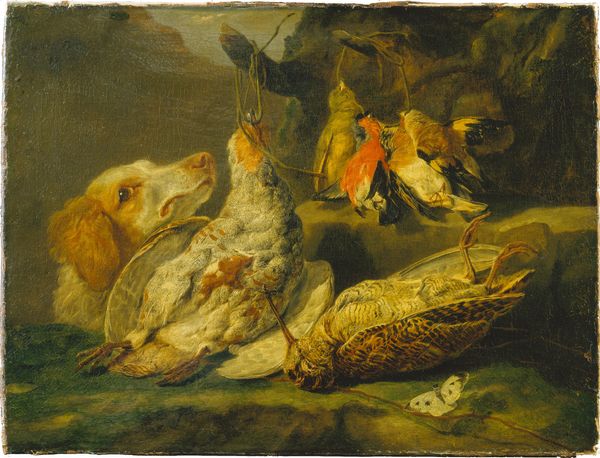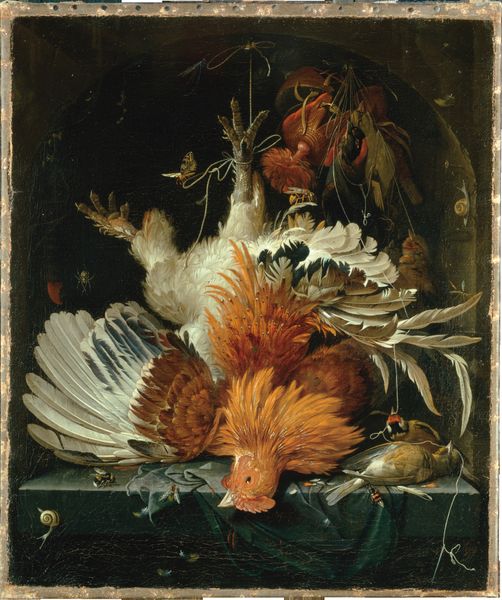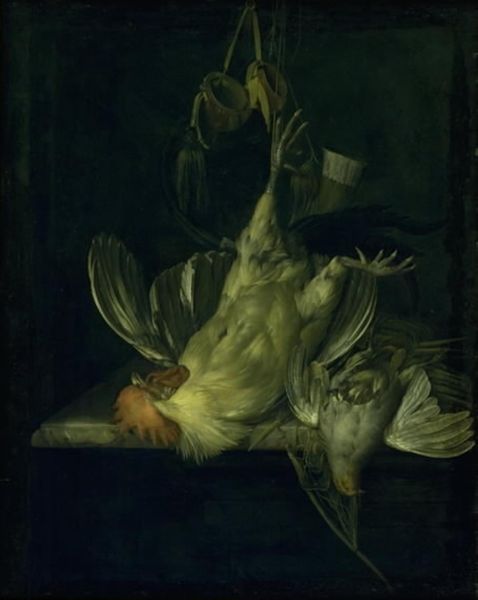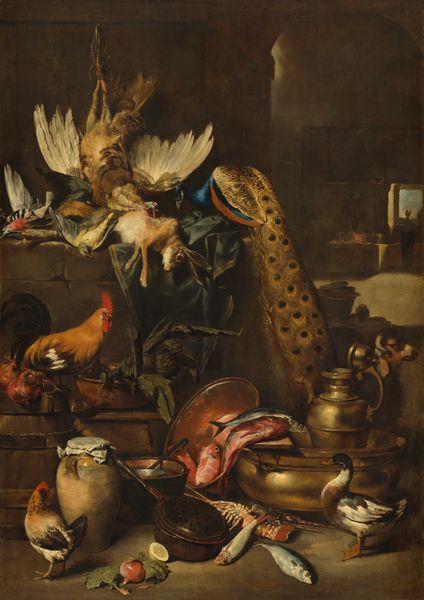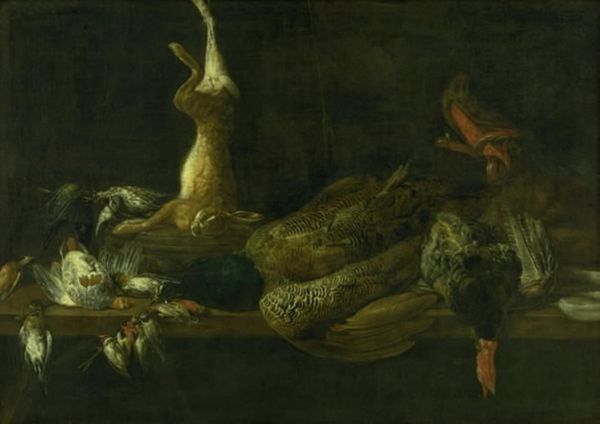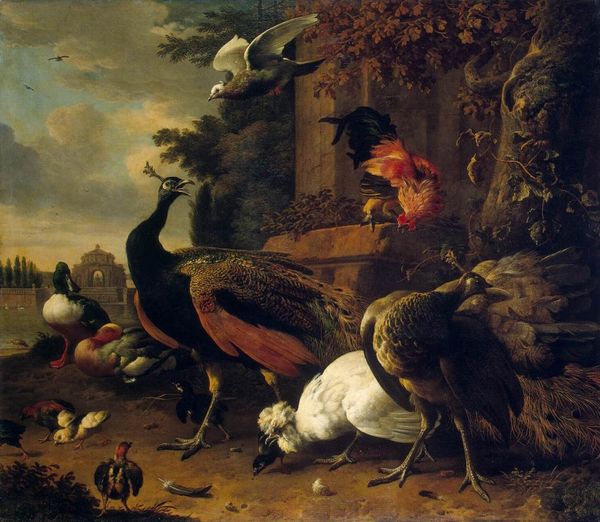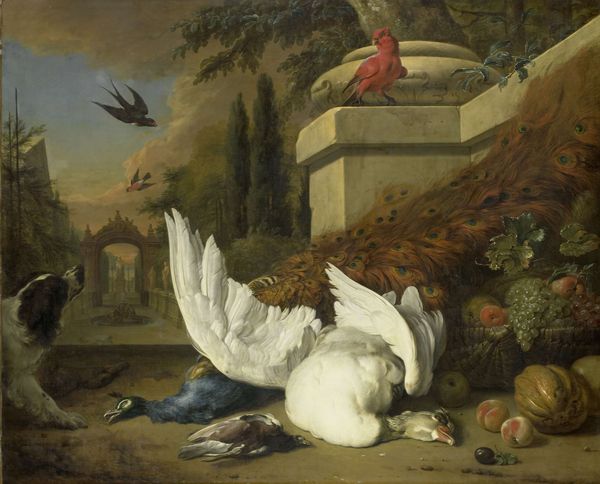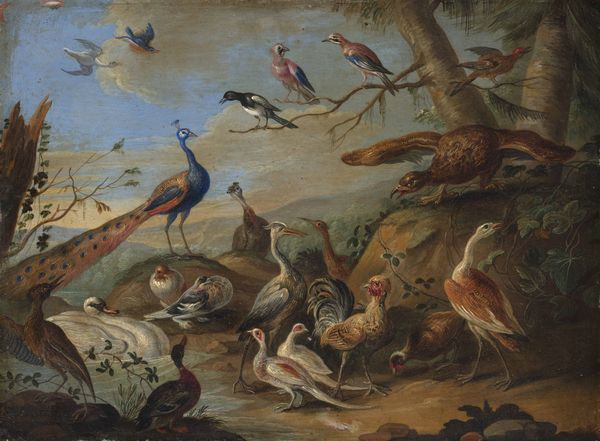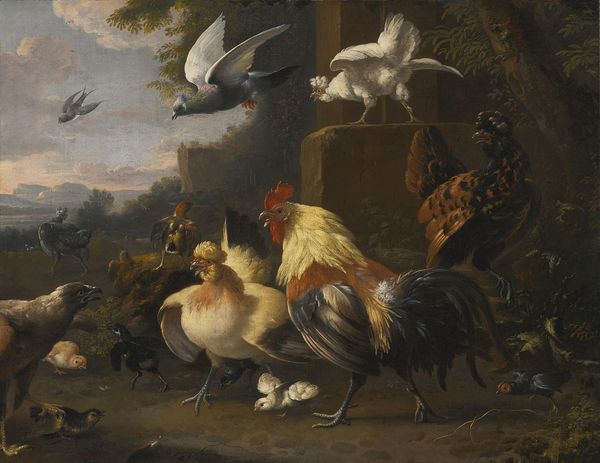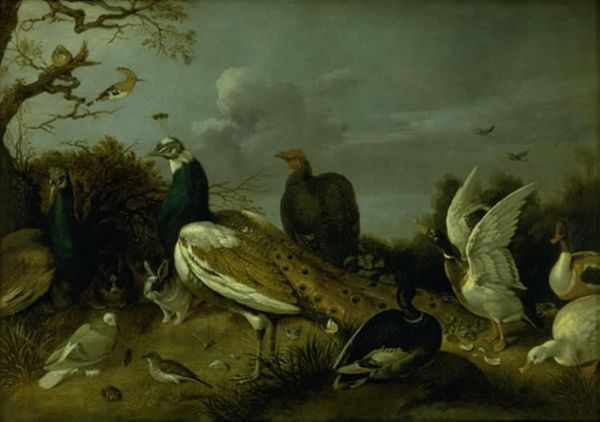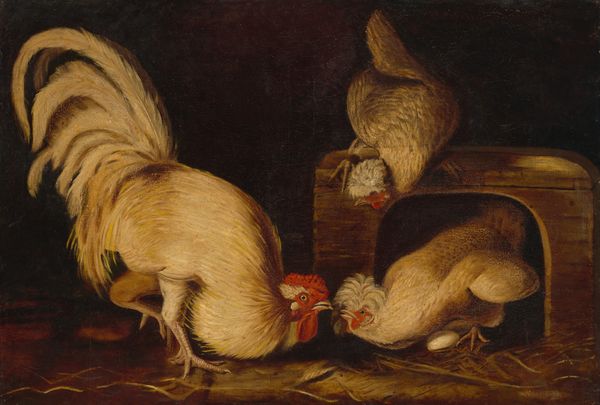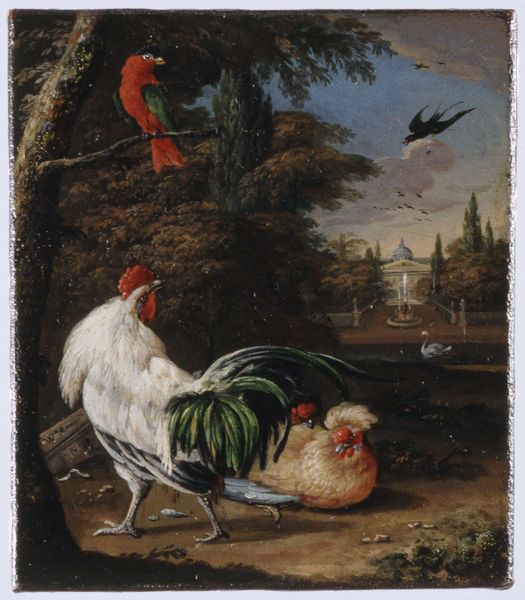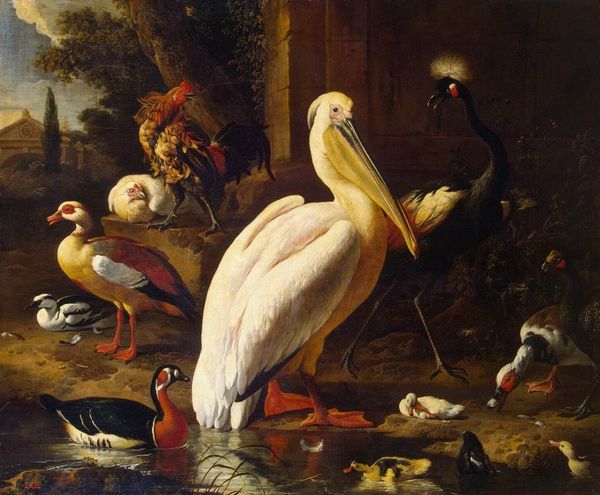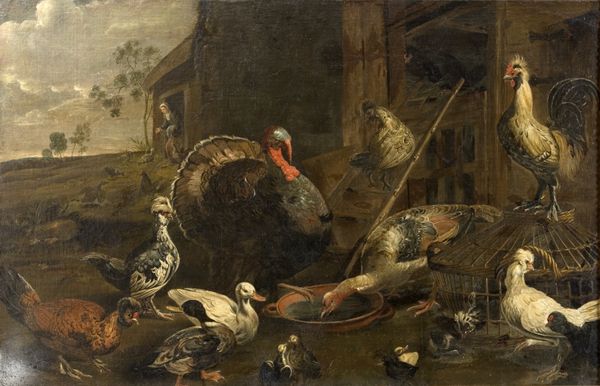
oil-paint, wood
#
baroque
#
dutch-golden-age
#
oil-paint
#
oil painting
#
wood
#
genre-painting
#
charcoal
#
realism
Dimensions: 71 cm (height) x 55 cm (width) (Netto)
Editor: Here we have Elias Vonck’s “Dead Wild Fowl,” an oil on wood painting from 1640. The somber color palette makes it quite a contrast to some of the brighter landscapes we've seen. What's your take on it? Curator: Well, genre paintings like this one tell us a lot about Dutch society at the time. Consider the rise of the merchant class in the Golden Age. A piece like this, depicting fowl, moves away from strictly religious or aristocratic subjects, finding its place in the homes of the growing middle class. It’s about displaying prosperity, demonstrating the ability to afford such a bounty, even in painted form. How do you see that reflected in the composition itself? Editor: That's interesting, the composition almost feels deliberate, like they’re carefully arranged. The placement draws the eye towards different textures - feathers, raw meat... Is that significant? Curator: Exactly. It's not just about having food; it’s about showcasing it, performing this abundance for themselves and for visitors. Also consider the developing field of scientific study at that time: an exact reproduction, such as can be found with this work, spoke to this increasingly valued field. Genre paintings such as these became records. Editor: So, in a way, this seemingly simple still life touches upon class, consumption, and even scientific exploration? Curator: Precisely. Art doesn’t exist in a vacuum. Understanding its historical context – the economic, social, and even scientific currents of the time – deepens our appreciation. Editor: I never thought about it that way. Thanks for making that connection. Curator: My pleasure. It shows how one painted scene is really a reflection of the values of the world surrounding it.
Comments
No comments
Be the first to comment and join the conversation on the ultimate creative platform.
